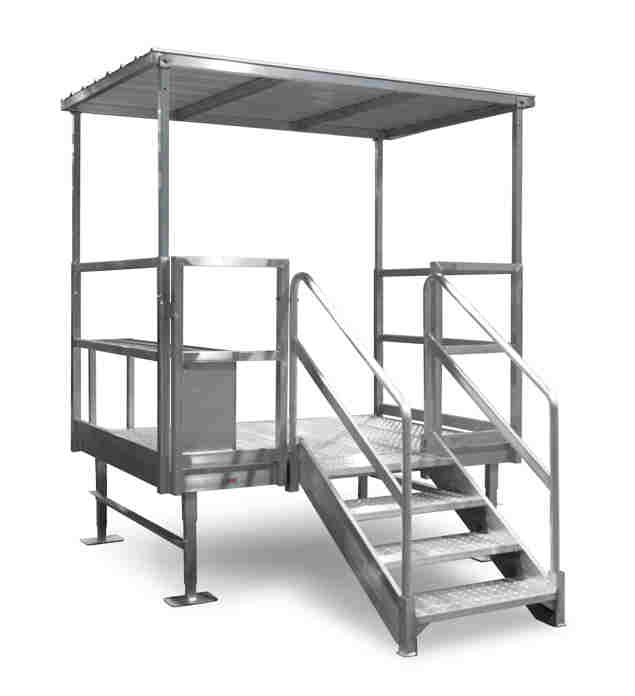Are you overwhelmed when it comes to OSHA compliance for fixed or temporary stairs on your job site? There are extensive regulations for stair rails, riser height, platforms, landings, and so on; so many regulations, in fact, that it can be difficult to know which product you need.
 The Occupational Safety and Health Administration has established standards and safety regulations for workplace stairs in their effort to protect workers from injury. Some regulations apply to residences, particularly multi-family units like duplexes and apartments. Others apply to stairways used in construction, alteration, repair (including painting and decorating), and demolition on work sites covered by OSHA. Still others apply to marine and other specialty environments.
The Occupational Safety and Health Administration has established standards and safety regulations for workplace stairs in their effort to protect workers from injury. Some regulations apply to residences, particularly multi-family units like duplexes and apartments. Others apply to stairways used in construction, alteration, repair (including painting and decorating), and demolition on work sites covered by OSHA. Still others apply to marine and other specialty environments.
REDD Team can help you comply with these comprehensive regulations to avoid the hazards associated with the walking/working surfaces on your job site. We are a leading manufacturer of premium quality aluminum access products, including OSHA-compliant stairs, crossover stairs, walkway systems, pedestrian bridges and wheelchair ramps.
Our Dura-Grip OSHA Stair, Flex-Step OSHA Stair, and OSHA Crossover Stairs are engineered with sturdy aluminum extrusions and structural riser material. They are lightweight, easily installed, virtually maintenance free, and designed to meet your architectural needs.
OSHA Stair Riser Standards for Fixed Industrial Stairways
Why is there so much emphasis on riser and tread design? Research shows that during stairway use, pedestrians view only the first and last three steps, and then negotiate the rest of the stairway without looking. Consequently, the design of the top three and bottom three steps is crucial. Each of the following factors contributes to the safety and well-being of pedestrians and workers:
- Fixed stairs must be installed at angles to the horizontal of between 30 degrees and 50 degrees. Any uniform combination of rise/tread dimensions may be used that will result in a stairway at an angle to the horizontal within this range.
- Rise must be a minimum of 6 ½ inches and a maximum of 9 ½ inches, but this corresponds to the angle of the stairs. For example, the standards set the rise for stairs on a 33-degree angle at 7 inches. For stairs on a 40-degree angle, the rise must be 8 inches.
- Variations in riser height or stair tread depth must not exceed 1/4 inch between the tallest and the shortest riser within the given flight of stairs. Rise height and tread width must be uniform, including any foundation structure that is used as one or more treads of the stairs.
- Stairways with four or more risers, or rising more than 30 inches in height, whichever is less, must have at least one handrail. A stair rail must also be installed along each unprotected side or edge.
REDD Team aluminum stairs will help you meet all of the other OSHA regulations related to industrial stairs as well. They are designed for 100psf live load and a concentrated load of 300lbs, feature slip-resistant and self-draining decks, and come with a one-year warranty.
Stairways and ladders are a major source of injuries and fatalities among construction workers. Call us at (800) 648-3696 for help with the OSHA standards for stair incline, stair riser height, stair treads, and overhead clearance, and check out our catalog of products that will keep your workplace safe.

